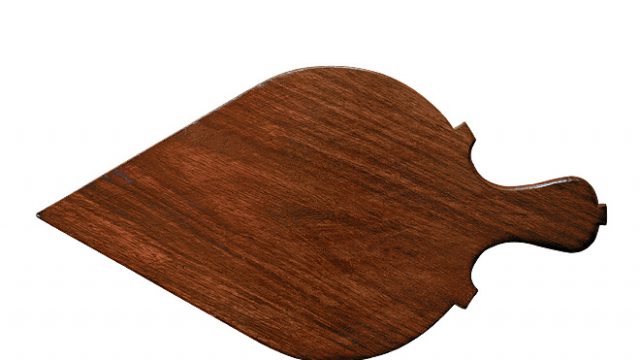We thought it was a cutting board and wondered at the absence of marks from a knife. There was a whole cardboard box of them, dumped ignobly, and this one caught our eye for its fine rosewood. The keeper of the dusty roadside shop selling antiques on the East Coast Road didn’t have a clue what it was about, though he did say it was from Chettinad. A couple of months later, I had the chance to meet an older Chettiar woman, incredibly knowledgeable about many things, and I promptly took our ‘cutting board’ (never used as such, of course) for the meeting (even by the curious standards of my handbag, this was novel). It’s a sotthu palahai, she said matter-of-factly, a hint of nostalgia in her smile. The pointed end is inserted into the pot of cooked rice, which is then turned to drain out water. It comes with a simple T-stand (not sold to us) which holds it in place. The sotthu (from soru or cooked rice) palahai (wooden board) was given to brides as part of their seeru, which is understood in southern India not so much as dowry but as bridal gifts or a woman’s wealth from her maternal family. Traditionally, she has control over it, and in business communities like the Chettiars, where the inherited gold and money can be significant, women have the freedom to invest where they choose.
Legend has it that they would sometimes pick banks rivalling those of their own families because they too were astute businesswomen keen on protecting and growing their wealth.




